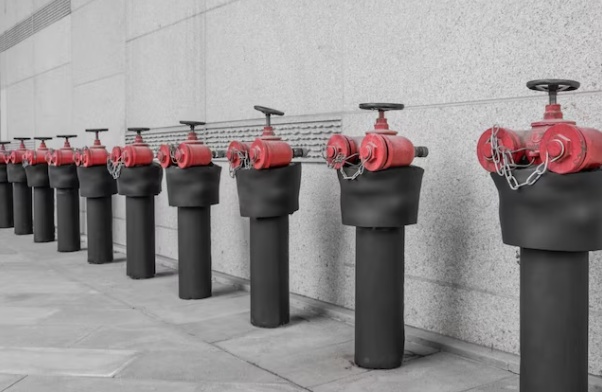Introduction
In the battle against fires, prevention is undoubtedly the best strategy. However, despite our best efforts, fires can still occur. When flames ignite, having effective fire suppression systems in place can make all the difference between minor damage and catastrophic loss. In this comprehensive guide, we'll explore the world of fire suppression system, from understanding their types to their installation and maintenance.
Understanding Fire Suppression Systems: Types and Mechanisms
Fire suppression systems are designed to control or extinguish fires swiftly, minimizing property damage and protecting lives. There are several types of fire suppression systems, each with its unique mechanisms and applications:
-
Water-Based Systems:
- Wet Pipe Systems: These are the most common type of fire sprinkler systems. They contain water under pressure in the pipes, which is released immediately upon detection of heat or flames.
- Dry Pipe Systems: Ideal for environments where freezing temperatures are a concern, dry pipe systems contain pressurized air or nitrogen instead of water in the pipes. When a fire is detected, the valve opens, allowing water to flow into the pipes and extinguish the flames.
-
Chemical-Based Systems:
- Foam Systems: Foam suppression systems work by creating a blanket of foam that suppresses the fire and prevents oxygen from reaching the fuel source.
- Gas Systems: Utilizing agents such as carbon dioxide (CO2), clean agents, or inert gases, gas suppression systems displace oxygen from the fire area, effectively smothering the flames.
-
Powder-Based Systems:
- Dry Chemical Systems: Dry chemical suppression systems release powder agents such as sodium bicarbonate or potassium bicarbonate, which chemically react with the fire and suppress its combustion.
-
Specialized Systems:
- Water Mist Systems: Water mist systems use fine water droplets to cool the fire and displace oxygen, making them effective for suppressing various types of fires, including those involving flammable liquids or electrical equipment.
- Pre-Engineered Systems: These systems come pre-assembled and are suitable for smaller spaces or specific fire hazards, such as kitchen fire suppression systems.
Installation and Maintenance: Ensuring Effectiveness
Proper installation and regular maintenance are crucial for ensuring the effectiveness of fire suppression systems. Here's what you need to know:
-
Design and Installation:
- Seek professional assistance: Fire suppression systems should be designed and installed by qualified professionals who understand the specific requirements of your building and fire hazards.
- Consider environmental factors: Factors such as building layout, occupancy type, and environmental conditions should be taken into account during the design and installation process.
- Compliance with regulations: Ensure that your fire suppression system complies with local fire codes and standards, as non-compliance could result in fines or penalties.
-
Routine Maintenance:
- Inspection and testing: Regular inspections and testing of fire suppression systems are essential to identify any issues or malfunctions promptly. This includes checking pressure levels, testing alarm functionality, and inspecting components for signs of wear or damage.
- Maintenance schedule: Develop a maintenance schedule based on manufacturer recommendations and industry best practices. This should include tasks such as replacing worn components, cleaning nozzles, and verifying system integrity.
- Training and education: Educate building occupants and staff on fire suppression system procedures, including how to operate manual controls, evacuate safely, and recognize signs of system malfunction.
Conclusion
Fire suppression systems are invaluable assets in safeguarding lives and property against the ravages of fire. By understanding the different types of suppression systems, ensuring proper installation, and conducting routine maintenance, you can enhance the safety and resilience of your building in the face of potential fire hazards.
Remember, when it comes to fire safety, prevention is key, but preparedness is essential. Invest in a reliable fire suppression system today and gain peace of mind knowing that you're prepared to tackle any blaze that may arise.


No comments yet